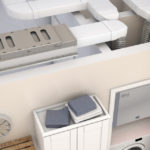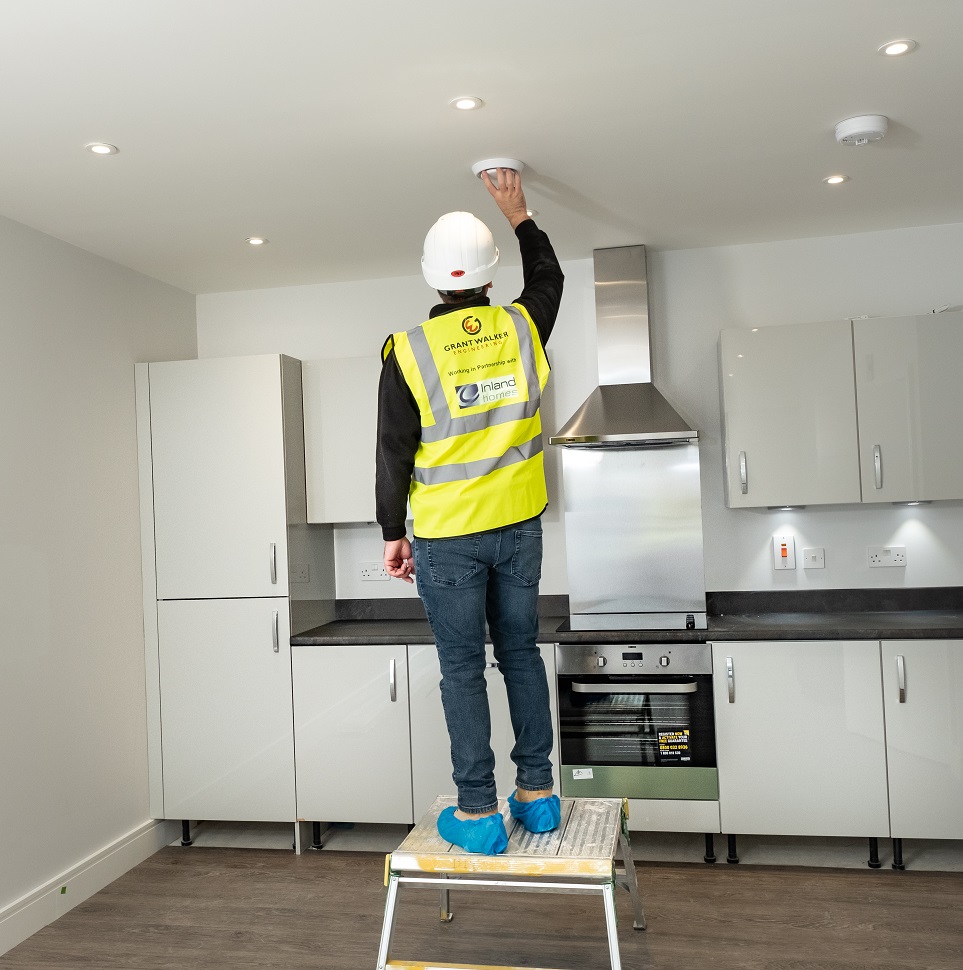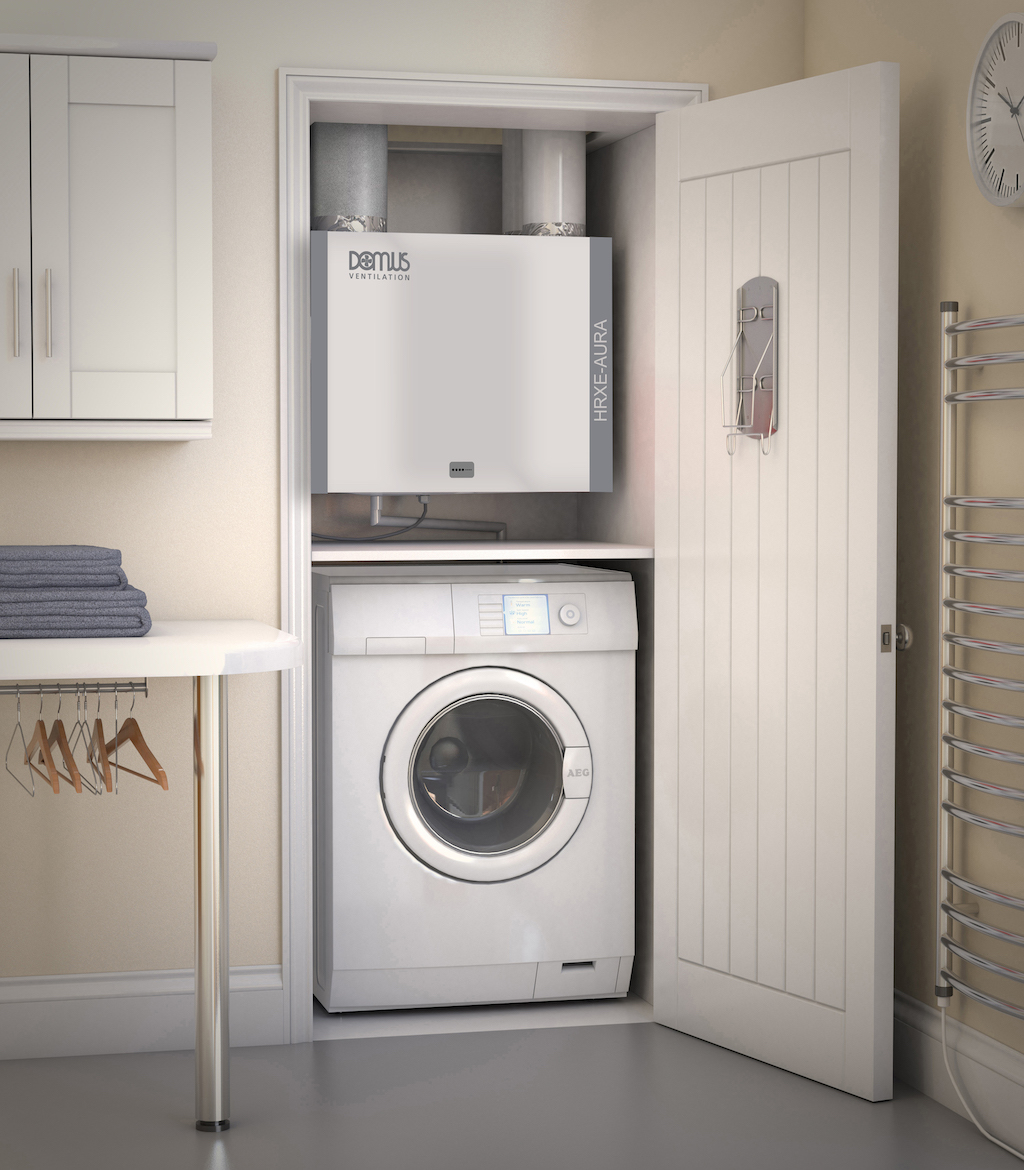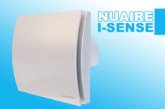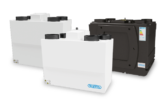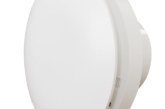Paul Williams, Domus Ventilation Product Manager, investigates the role mechanical ventilation has to play in improving indoor air quality.
Ventilation has become a key concern in our buildings. It has progressed from concerns around condensation and mould prevention to reducing overheating in our more airtight new homes. In recent years the issue of indoor air pollution has also entered the debate and Covid-19 has only accelerated the need for healthy, well-ventilated interior spaces.
Ventilation can reduce the risk of infection from Coronavirus indoors by over 70%. Whilst extract fans in bathrooms and kitchens provide a basic level of ventilation, a far more effective solution in new build homes is whole house mechanical ventilation.
Mechanical Ventilation with Heat Recovery is top of this list as these systems combine supply and extract ventilation in one system. They efficiently pre-warm fresh air drawn into the building with waste stale air from ‘wet’ rooms (kitchens, bathrooms, utility spaces) using a heat exchanger. The filtered, pre-warmed air is distributed around the home, effectively meeting part of the heating load in energy efficient dwellings. Domus Ventilation’s new HRXE-HERA and HRXE-AURA MVHR units both feature advanced heat exchange proficiency enabling up to 95% of waste heat to be recovered.
MVHR systems provide effective ventilation, are energy efficient and extremely effective at reducing the risk of virus transmission, condensation and cold air draughts.
A lower cost alternative to MVHR, Mechanical Extract Ventilation systems actively extract air from wet rooms via ducting to a central ventilation unit which exhausts to the atmosphere. Replacement fresh air is drawn into the property via background ventilators located in the habitable rooms and through air leakage.
Both types of system have been recognised by the World Health Organisation as providing a line of defence against the spread of coronavirus.
Fighting air pollution
In light of Coronavirus, ventilation has never been more important, but it would be a mistake to focus solely on this aspect. Air pollution – in the form of PM2.5 and NOx generated by domestic fossil fuel burning and transport respectively – is the long term health crisis we are currently in the midst of. It is particularly prevalent in our cities.
According to NHS England, 30% of preventable deaths in England are due to non-communicable diseases specifically attributed to air pollution. This has been sadly brought to the fore by the recent recognition of air pollution as a cause of a person’s death for the very first time in the UK, and possibly the world.
Whole house mechanical ventilation systems are effective in distributing fresh air throughout the home, but if that air is polluted – especially if the property is located near a busy road – then it’s important to add filtration to the system. The Domus Ventilation NOX-FILT, for example, works on the supply leg of the ducting system of a mechanical ventilation system and prevents up to 99.5% of NO2 pollution from entering a home. There are two units in the range with the second one having the added benefit of a PM2.5 pre-filter.
We may have to live with Covid-19 in future years, but we are witnessing one of the biggest vaccination programmes in the history of the world which will have a major impact on the spread of this virus.
However, when it comes to air pollution, we still have a long way to go. Experts agree that both source removal and ventilation are key to reducing indoor air pollutants. Reducing PM2.5 and NOx to within safe limits is the long term goal but, in the meantime, we have to rely on ventilation and filtration to make our indoor environment safe and comfortable. Mechanical ventilation is a valuable and relatively low cost means of achieving this.

